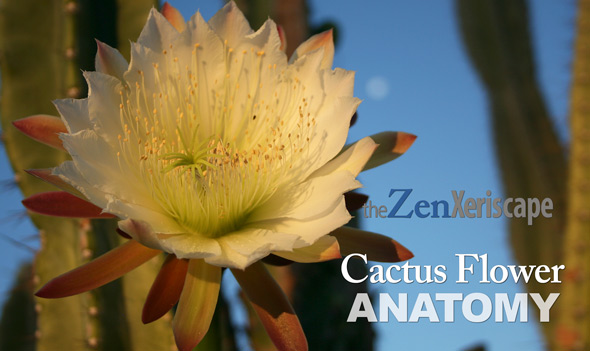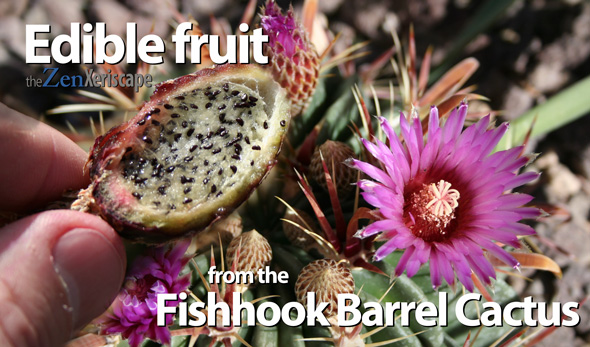One day, I noticed that my Opuntia cactus had a few pads covered with a white, sticky substance. To me, it looked like a fungus. In reality, though, the white substance was harboring an infestation of the cochineal bug (Dactylopius coccus). If you’ve had this problem, read more to find out how to eliminate cochineal insect infestations.
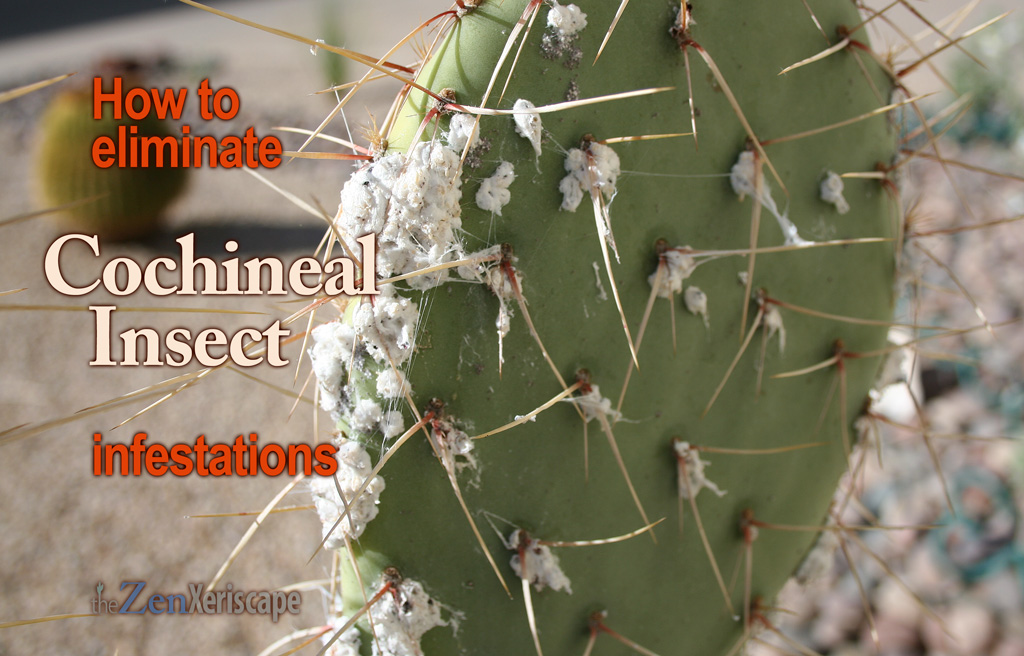
but then I learned it was a
cochineal scale insect infestation.
Photo by Doug Martin
Get Prime! (As an Amazon Associate, I earn a commission from qualifying purchases.)
In fact, my poor Opuntia had been an unwilling host to the cochineal scale insect for a couple of years. Now, however, I am taking the time to eradicate the troubling infestation.
I have had enough of the cochineal bug infestation! Here’s how to eliminate cochineal bug infestations.
What is the cochineal scale insect?
In order to fight this infestation, I got to know my enemy, the cochineal scale insect. First, this bug is a parasite. It had ingeniously used my Opuntia cactus as its home and its food source.
The insects created the sticky white mounds as their shelter from other predatory insects and the hot desert sun.
Inside their protective scale, the cochineal insects use their proboscis to tap into the cactus pad. Then, they suck out the sap for their own nourishment.
Is it a white fungus?
I have found that, in my little corner of the world in Phoenix, the cochineal bugs usually build their white sticky mounds, or cochineal scale, on the least sunny side of the pad.
These insects are instinctively smart and build their shelters for optimal survival. The cochineal scale does not dislodge easily from the pad.
One good way to confirm that your Optunia cactus has a cochineal bug infestation is to carefully scrape off some of the white fungi-like material. Then, as repulsive as this might sound, squeeze the white fluffy substance between your fingers.
It does not hurt and will not make you sick.

cochineal scale, is usually on the
shady side of the cactus pad.
Photo by Doug Martin
Was it my blood or red dye?
That is what I did, and in the process, I had rubbed and crushed some of the harboring bugs and their eggs. My fingers were saturated with a shimmering red dye from the cochineal bugs’ bodily fluids.
Hours after washing my hands with soap and warm water, my finger remained tinted with a pinkish hue from the carminic-acid-based dye. So, the carmine dye must have its uses as a natural food coloring or clothing dye, right?

but it is the red dye from the
cochineal insect’s bodily fluids.
Photo by Doug Martin
Can we use the carmine dye in our modern world?
Yes, we can use the highly in-demand carmine dye today. Surprisingly, people have been using the red carmine dye from the cochineal bug for centuries.
Today, modern businesses still use this dye in processed foods and cosmetics, such as lipstick. You might see carmine dye in foods like yogurt, pork sausage, candies, bright-red maraschino cherries, along with jellies and jams.
Check the ingredient list of processed foods that you suspect might contain carmine dye. The U.S. Food and Drug Administration requires food companies to list this ingredient. You might see it noted as:
—Carmine dye
—Carminic acid
—Cochineal extract
Despite today’s thriving demand for carmine dye, most homeowners do not want to use their xeriscaped opuntia cactus to raise cochineal bugs. I do not, that is for sure.
How to eliminate cochineal insect infestations
—Use a pressurized water hose and wash the insects and their scale off your cactus pads. Be careful that the water pressure is not too strong and you end up damaging the cactus plant.
I used a host without pressure. However, to add a little synthetic pressure, I placed my thumb over the hose and that was enough to remove most of the scale.
If there is any remaining residue, use a bristle brush (with soft plastic bristles) and gentle rub it off. Then rinse with water.
—If water pressure isn’t enough to remove the white patches, simply cut off the pad and discard.
—If the infestation returns, give your opuntia cactus another bath with pressurized water. Then, apply insecticidal soap over the cactus pads. Even an unscented dishwashing liquid would work.
—Consider a natural solution with natural predators like the ladybug (Coleoptera). Of course, many of those wild insects will just fly away to a convenient food source where there is less competition from other ladybugs.
However, I am sure that a small percentage would stick around and help keep the cochineal bug population in check.
Around my house, I usually see a few ladybugs hanging around. However, I might need hundreds more to control cochineals, aphids, mites, and other garden pests.
Chemical insecticides as a last resort
—As a last result, a chemical insecticide such as Malathion should work. To be certain the chemical adheres to the cactus pads, add a little dishwater liquid.
—In the future, don’t water the cactus plant as often to help prevent another infestation. I’ve found that after I cut back on the water (I rarely give them extra water today), the infestations are gone.
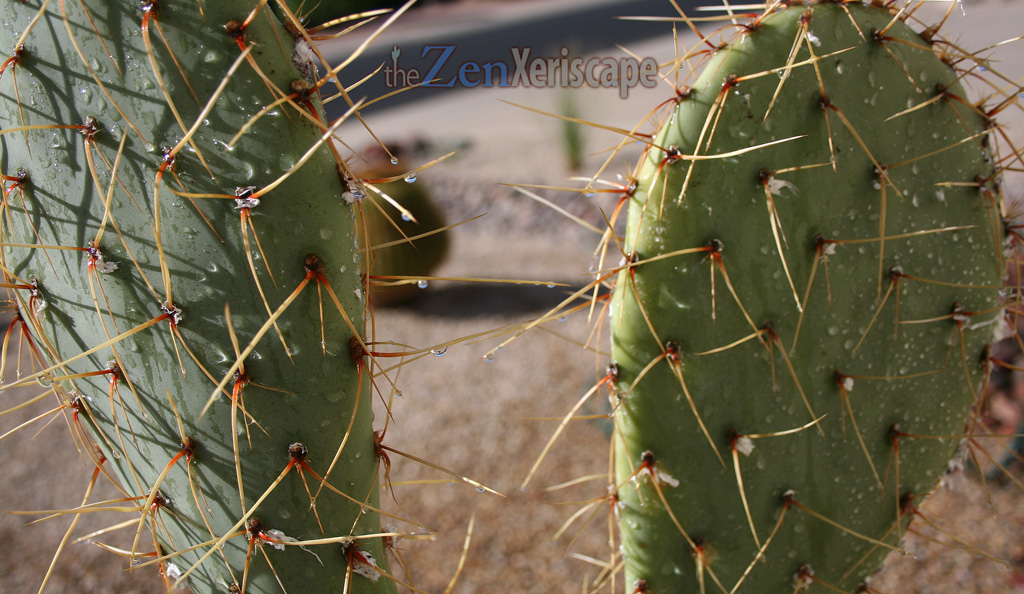
most of the white nesting areas are gone.
I applied pressure with my thumb on the hose,
and that was enough to do the job (mostly).
Photo by Doug Martin
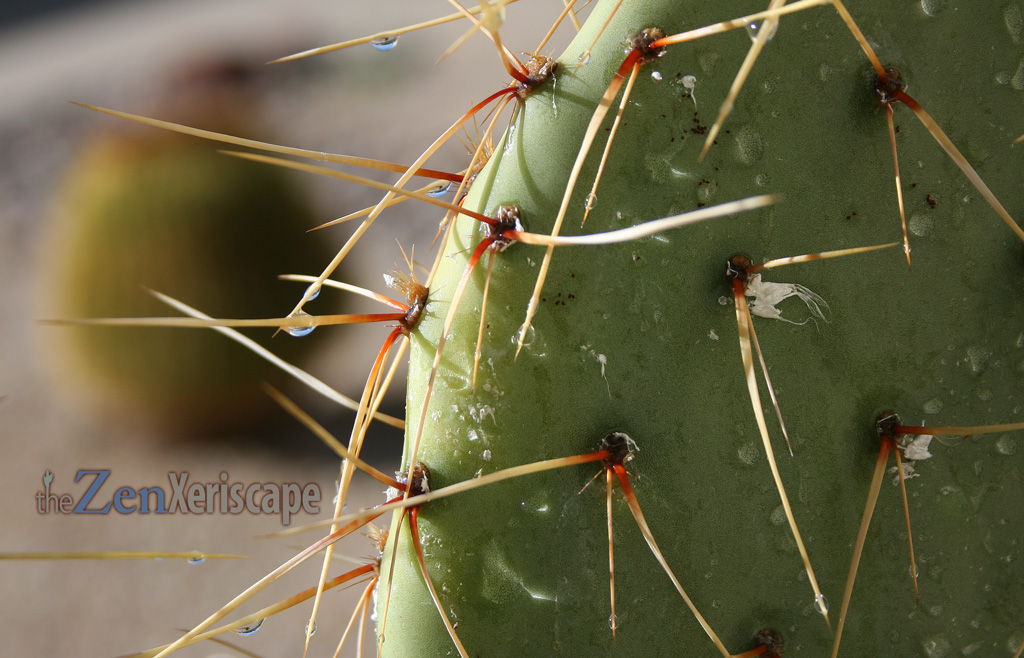
with a soft brush, then rinse again.
Photo by Doug Martin
How to eliminate cochineal insect infestations
What I’m doing to eliminate cochineal scale insect infestations
For now, I am sticking with the natural route and will use pressurized water. If there are small stubbornly sticky areas that didn’t wash off, I use a brush to gently brush them off, and then rinse again.
Every week, I will check for new signs of infestations, and spray those pesky bugs off my opuntias.
For more troublesome cases, I simply cut off the infested pads, boxed them up, and threw them away.
No supplemental water
In addition, I stopped giving supplemental water to my opuntia cactus. I’m not sure why that helps, but I believe it does. Since then, I have rarely seen cochineal bug infestations.
I only regret that I did not deal with my cochineal bug problem earlier. When birds perch on the cactus pads, they can pick up a little of the sticky white substance which contain a few bugs. As they fly away, they take a potential new infestation to their next destination – like my neighbor’s house and landscape. That is not being a good neighbor on my part.
Have your prickly pear cacti ever been infested with cochineal bugs? How did you fix the problem? Let us know in the comments section below! Thank you!
Content and photos by Doug Martin and The Zen Xeriscape


